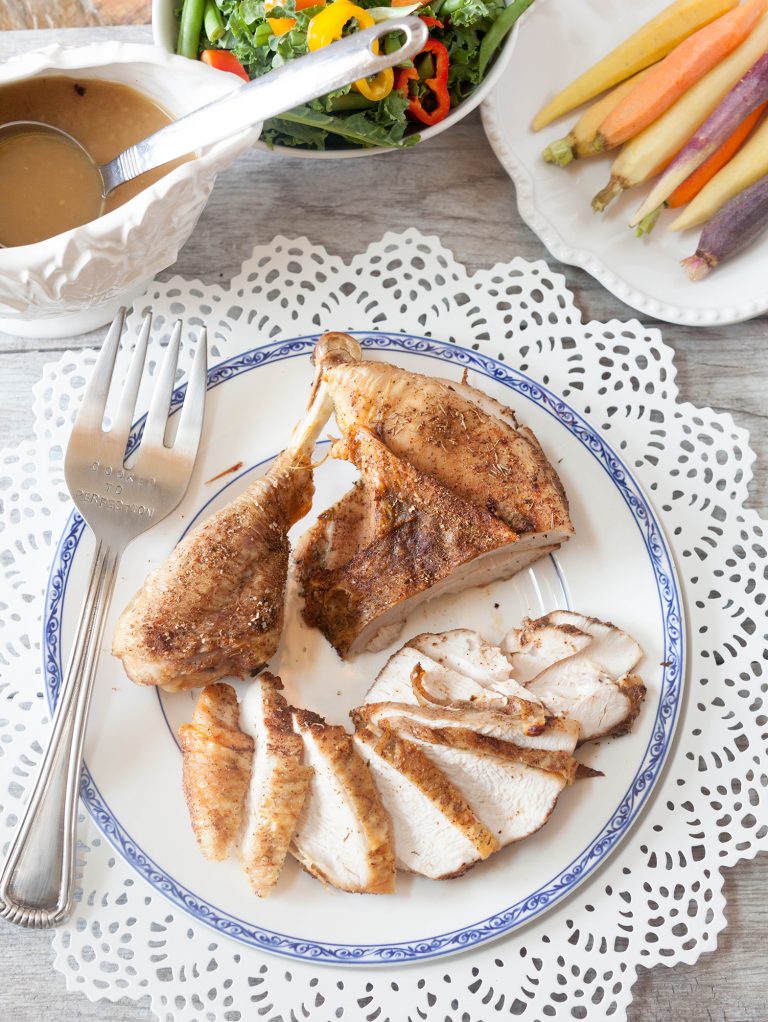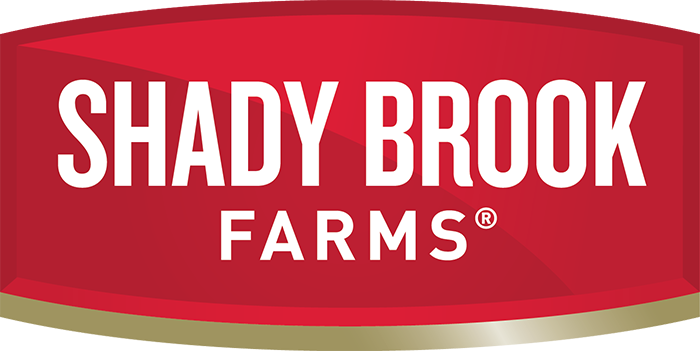
How to spatchcock a bone-in turkey breast
Spatchcock (butterfly or split) involves vertically cutting a turkey breast open and flattening it out. If you do this, your oven or outdoor grill can directly apply heat to every part of the opened meat and cook it faster.
Why Spatchcock a Turkey Breast?
The USDA recommends cooking a turkey breast until it reaches a minimum internal temperature of 165 degrees Fahrenheit. Depending on your recipe and cooking method, turkey breasts can take up to two hours to reach a 165°F internal temperature. If you want to shorten your cooking time, consider spatchcocking your turkey breast.
Spatchcocking may be an extra step during turkey breast preparation, but it’s worth the effort. Why? The process is an easy and proven shortcut for achieving moist and flavorful turkey in half the time it typically takes to cook turkey breasts.
We highly recommend spatchcocking a whole turkey or bone-in turkey if you intend on grilling the meat. You can also spatchcock a turkey before roasting or slow cooking. If you are unconvinced about spatchcocking turkey breasts before cooking, let’s take a deeper dive into its benefits.
Benefits of Spatchcocked Turkey Breast
Saves Time
When cooking a bone-in turkey breast, it takes a while for the heat to penetrate the thick meat and cook it all. Spreading a turkey breast open will thin it out and reduce the cooking time. If you do it correctly, you can shorten your cooking time by up to 50%.
Shortening your cooking time means you don’t have to wait as long to enjoy your turkey breast. Also, turkey breast can become dry if it spends too long in the oven or grill. If you can cut your cooking time by half, you are more likely to end up with well-cooked yet juicy turkey breast.
Evenly Cooked Meat
The size and thickness of a bone-in turkey breast will lead to the exterior cooking long before the inside of the meat. If you spatchcock a turkey breast, your grill or oven will cover more surface area and cook the entire meat evenly. When you have an evenly cooked turkey breast, every bite tastes delicious.
Evenly cooked turkey breast is crucial not just for flavor but also for safety reasons. Any cooked part of a turkey that does not reach an internal temperature of 165°F can house bacteria that pose health hazards when eaten.
More Flavor
When you season a bone-in turkey breast, the seasoning will not go beyond the skin. If you spatchcock the breast, you can cover more surface area with your seasonings and massage the spices into every crevice of the meat. Spatchcocking a turkey breast before grilling or smoking will also allow wood smoke to penetrate the meat better and flavor it.
How to Spatchcock a Turkey Breast
Spatchcocking a turkey breast isn’t as complicated as it sounds. Follow these steps to complete the process within a few minutes.
- If you have a frozen turkey, you must defrost/thaw it before spatchcocking (Follow the steps in our how to thaw a turkey guide). After your turkey breast has thawed, place it on a cutting board, belly side down.
- Grab a pair of kitchen shears or a sharp kitchen knife. Use your fingers to find the turkey’s backbone and cut along both sides of the spine. Cut through from top to bottom until you can extract the spine. Cut as close as you can to the spine to avoid wasting meat or cutting other joints.
- Remove the backbone, but don’t throw it away. The backbone, turkey neck, and giblets are full of flavor and great for making stock or gravy.
- After removing the backbone, find the cartilage connecting the wishbone and cut it. Grab both sides of the cavity you created at the back and stretch the turkey open.
- Flip the turkey over on your cutting board with the breast facing upwards. Place your hands on the thickest part of the turkey breast, like you are about to give it CPR, and shove downwards. The action should break the turkey breastplate and fully open the chest.
- Evenly season the outside of the turkey breast. Flip it over and season the inside as well. Give the seasoning a few minutes to soak into the meat, then cook it with your preferred method.
Explore Our Spatchcocked Turkey Recipes
Dry Rub Spatchcock Turkey
It takes ten minutes to prep this meal, and you will end up with enough meat for ten servings. The wide variety of spices used in the recipe will make your turkey breast a hit at the dinner table.
Smoked Bone-in Turkey Breast
Smoked bone-in turkey breast requires minimal prep but delivers tasty, juicy smoke-flavored meat. Spatchcocking the breast will also give you crispy skin for an even tastier bite.
One-Pot Smoked Turkey
The one-pot smoked turkey recipe has a rustic appeal. Since it requires cooking potatoes, corn, and carrots with the turkey in the same pot, you can expect all of the accouterments to absorb the rich flavor of the smoked turkey breast. The recipe requires minimal prep time – about 20 minutes.
For fresh, top-quality turkey breasts for trying these recipes, shop here.
Spatchcocked Turkey Breast FAQs
If you do not have kitchen shears, grab your sharpest knife. Find the backbone of the turkey and start cutting from the top. Cut along both sides of the spine at the center of the back. After cutting from top to bottom, you should be able to pull the entire spine from the bird.
The backbone is opposite the breast at the center of the bird’s back.
Spatchcocking is butterflying a turkey by removing the backbone and spreading the bird open. Doing this flattens and opens up the bird, making it easier to season and cook. It’s an effective technique for shortening your cooking time and getting evenly cooked and juicy meat.
Hungry for More?
Sign up to get exclusive coupons, recipes, and seasonal inspiration straight to your inbox.
Join Now-
Products
It is our mission to provide you the highest quality turkey products to create and share wholesome meals with the ones you love.
Learn More -
Recipes
Thanks to turkey’s lean protein, you know you’re eating a meal you can feel good about. Dig in to find a new favorite for you and your family.
Learn More
